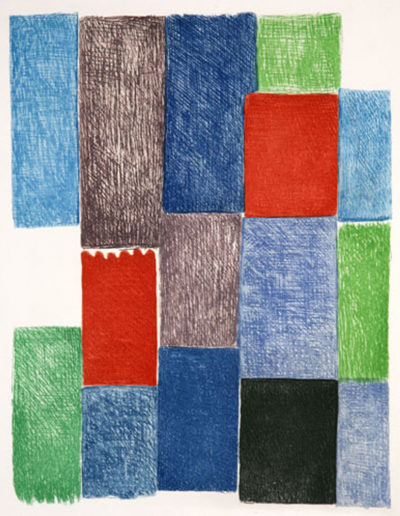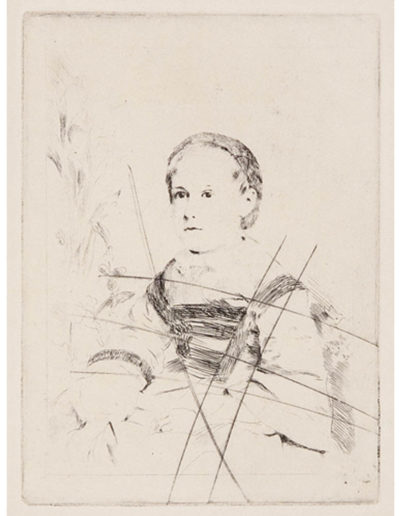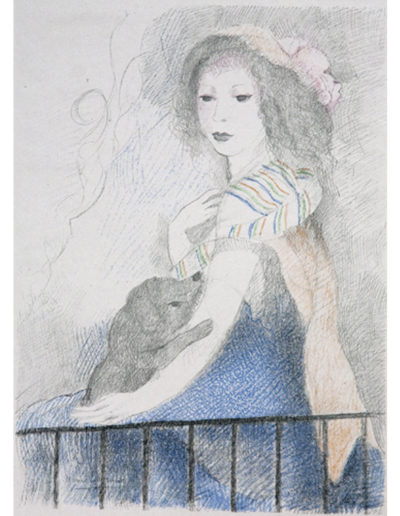Etching
The technique of etching has its origins in the craftsmen of the 15th century. Initially made on iron plates as an alternative to the burin, etching gained new impetus when artists began to use copper, particularly through the work of Rembrandt, who mastered this technique perfectly and produced several hundred etchings.
Throughout the 18th century, the technique became popular in Italy, thanks to figures such as Tiepolo or Canaletto, but also in Spain thanks to Goya, who placed it at the centre of his work. During the 19th and 20th centuries, many artists used this technique as a means of expression and dissemination. We can mention artists such as Rouault, Matisse or Picasso, a major figure in the history of engraving. Etching is a technique that is fairly quick to implement and whose gesture is close to drawing, making it one of the favourite engraving techniques of painters.
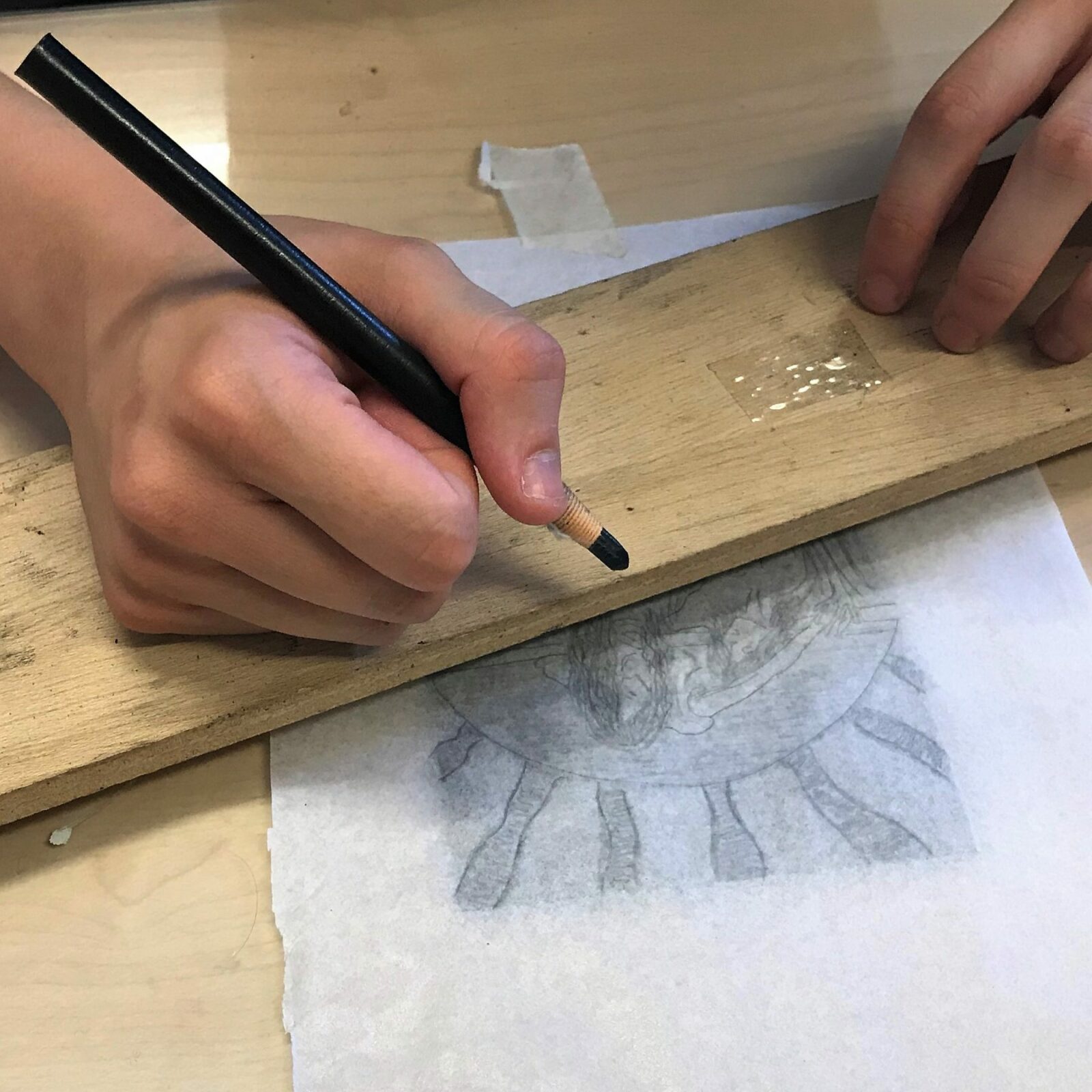
One of the main tools needed for etching is the etching tip. A wide variety of tips can be used, most of the time inserted in a cork handle for ease of handling. The metals are at the artist's choice according to his vision of the work; hard copper, iron, zinc or brass can be used. Each material will respond in a different way to the bites, changing the appearance of the final work. The most common remains the black satin varnish, easy to access and use. The varnish is applied with several types of brushes: flat brushes, to apply the varnish on the plate, and watercolour brushes, to make changes during varnishing.

The mordents (a bath of chemical substances in which the plate is immersed to dig it) are chosen according to the character one wishes to give to the work: for example, diluted Dutch mordant allows for a slow execution that gives a controlled appearance, while nitric acid can be used to make deep bites that are a little more distorted.
The plate is then degreased so that the varnish can be applied to it: the plate is rubbed with a cloth coated with water and Spanish white (a fine powder used for the maintenance of objects) to finish removing the grease. The plate is then sprayed with a jet of water to clean it from the products that have just been applied. Over a hot plate, a layer of varnish is applied to the plate. We try to make the varnish uniform by adding coats.

Once the varnish is dry, the first bites are made. Then the plate is introduced into the tank containing the bite. The plate can be removed and then put back into the bite as the engraver wishes: these different steps constitute the different bites. After the last bite, the plate is rinsed and then the varnish removed so that a proof can be made.
The plate is inked with a pad and then passed through tarlatan, a loosely smoothed cotton cloth, which prevents excess ink on the surface of the plate. With the palm coated with a little Spanish white, the ink is removed and the bevels are wiped off with a piece of cloth.
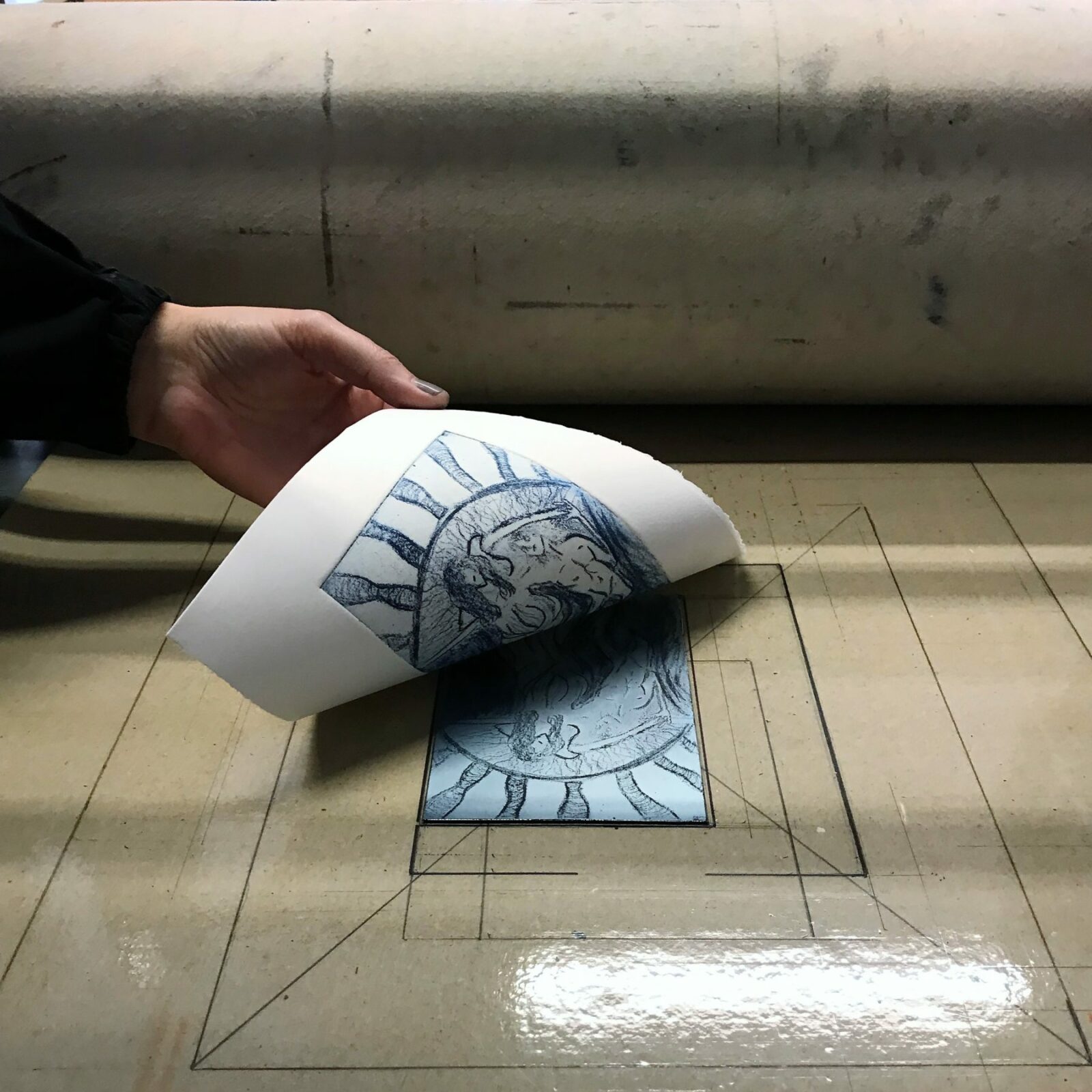
Finally, the intaglio press can be operated, after having put the plate and then the paper on the support.
A first state of the proof is made: if you want to accentuate certain areas, you can restart the process of degreasing and varnishing to add the extra strokes.
The final modifications of the plate are completed by the bite. The plate is taken out of the tank, rinsed and cleaned of its varnish. Ink is applied to the plate to make a proof. The proof becomes the final state of the print.

